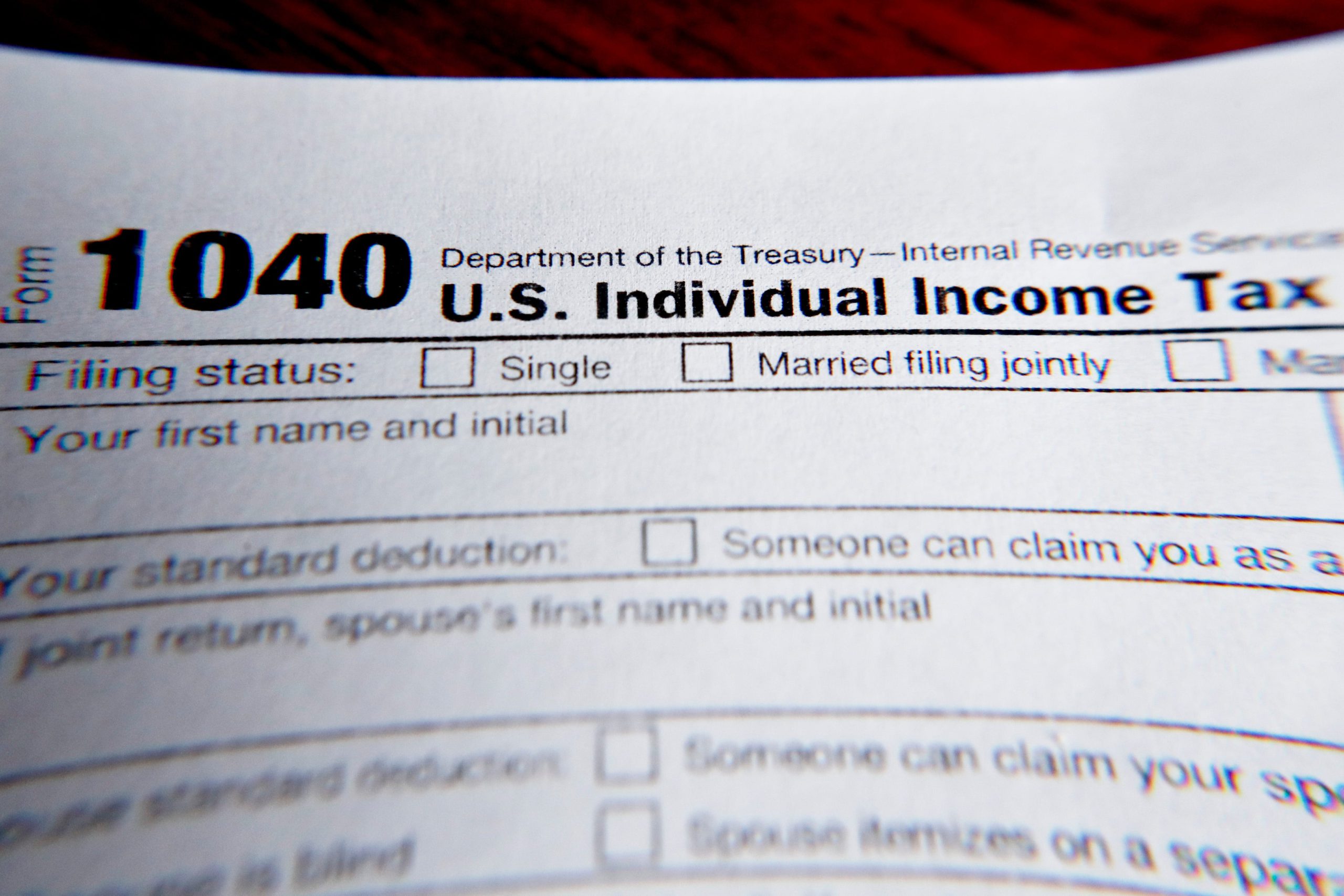

Starting this summer, many American families are expected to get a financial boost in the form of direct monthly payments to support the cost of raising children.
As part of the $1.9 trillion stimulus bill passed in March, Congress expanded the child tax credit so eligible families can receive $3,600 for children under 6 years of age and $3,000 for those between the ages of 6 and 17. Researchers have said measures in the latest relief package could cut child poverty in half.
"What we're talking about here is a potentially transformational policy that's going to put the single biggest dent in child poverty in the United States of anything that we've ever done," said Luke Shaefer, director of Poverty Solutions, an initiative at the University of Michigan that partners with communities and policymakers to find ways to prevent and alleviate poverty.
The most important thing to do to receive the child tax credits is to file your taxes ahead of the May 17 deadline, he said.
Poverty Solutions created a new website, poverty.umich.edu/child-tax-credit, to help people navigate how to get the expanded benefits. The tax credits are expected to be paid starting in July, according to the Internal Revenue Service, which plans to create an electronic portalto process the payments. Families would see monthly payments of $250 to $300 per child through December and then the rest of the money next year during tax time, instead of the usual lump sum issued once a year.
More: Why IRS needs homeless people, rural poor to file 2020 tax return
The change to monthly payments is meant to be a "stabilizing force," Shaefer said, noting that monthly payments can help people afford their immediate needs as parents. Another important change is that more people, especially those with lower incomes, are now eligible for the payments because the credit is "fully refundable," meaning taxpayers can get the full value of those credits as a refund, after any taxes owed. Researchers have said making this tax credit fully refundable is similar to child allowances found in countries such as Canada.
Researchers have also said the previous version, which was a credit of $2,000 per child under 17, was inaccessible to those who needed it most. About a third of American kids live in families whose incomes are too low to get the full credit and one in 10 children gets no benefits at all, according to a February report from Columbia University.
"For 2021, there is not an income floor at all. So anybody who has a qualifying child dependent would be eligible for this child tax credit," said Matt Hetherwick, director of individual tax programs at the Detroit-based Accounting Aid Society.
That means that the child tax credit will be available to 27 million children — including about half of all Black and Latino children and kids who live in rural areas — who otherwise would not have been able to get the full amount because their parents have low or no earnings, according to the Center on Budget and Policy Priorities.
"This says very simply: raising kids is expensive and government has reason to help families succeed in that work, and taking care of kids matters wherever you are on the income spectrum," Shaefer said.
The changes will remain in effect for a year although some Democratic lawmakers have said they want to make it permanent. President Joe Biden on Wednesday unveiled a $1.8 trillion American Families Plan that aims to extend the increases child tax credit through 2025, and make permanent the full refundability.
University of Michigan's Poverty Solutions website offers step-by-step guidance on the child tax credit that is also available in Arabic, Bengali and Spanish. Here is a run down of what to know about the child tax credit:
Who is eligible?
The American Rescue Plan temporarily increases the child tax credit for the 2021 tax year. Those who are eligible for the increased credit amount include: single taxpayers with incomes under $75,000; heads of households with incomes under $112,500; and married couples with incomes below $150,000.
The expanded benefits begin to phase out for taxpayers with incomes above those thresholds, meaning families will get smaller payments based on how much they make. They will see reductions of the credit by $50 for each $1,000 of income over the limits, according to the Journal of Accountancy.
Poverty Solutions says children must have a social security number. People can file with an Individual Taxpayer Identification Number (ITIN), but children must have a social security number.
How much could a family get?
Families with children under 6 years old can receive up to $3,600 per child and those with children between 6 and 17 can receive $3,600 per child. For example, a single parent of a toddler who makes $10,000 a year would have previously received $1,125. Under the new law, they would get $3,600, according to estimates from the Center on Budget and Policy Priorities. A single parent with a 4 and 7 year old would receive $6,600.
How do you apply?
The most important thing to do to receive the child tax credits is to file one's taxes. "Even if a family only has $1 in earnings or no earnings, this round they should file their taxes, because that's basically how families are enrolling" for the child tax credit, Schaefer said.
Eligible taxpayers don't need to do anything other than file for their 2020 tax returns if they have not already done so, according to the IRS.
The IRS is urging people with children to file their 2020 tax returns as soon as possible to make sure they're eligible for the child tax credit and any other tax credits, including the Earned Income Tax Credit (EITC). The IRS also says that "filing electronically with direct deposit also can speed refunds and future advance" child tax credit payments.
When will households get the benefits?
The way the child tax credit is structured under the current legislation means that families can get half of their full credit paid out monthly from July to December and then get the remainder next year during tax time.
According to the IRS, advance payments will be estimated based on taxpayers' 2020 tax returns, or their 2019 returns if the 2020 returns are not filed and processed yet.
Poverty Solutions notes that it's important to file taxes for tax year 2020 — so that the IRS knows where people live, their bank information and how many dependents they have — and tax year 2021 so that families can claim the rest of their expanded child tax credit.
Can people opt out of the advance monthly payments?
Yes, taxpayers can opt out of the advance monthly payments. According to the IRS: "Eligible taxpayers who do not want to receive advance payment of the 2021 Child Tax Credit will have the opportunity to decline receiving advance payments. Taxpayers will also have the opportunity to update information about changes in their income, filing status or the number of qualifying children."
The IRS earlier this month said that it is setting up an "electronic portal" and a new monthly payment system to distribute the tax credits.
How long will expanded benefits last?
Under the current law, the increased benefits are only for tax year 2021. Some lawmakers have pushed to make the changes permanent. The White House on Wednesday morning released a plan to make the expansions last through 2025.
If someone doesn't usually file taxes, what will they need to file their taxes in order to get the child tax credit?
Poverty Solutions says they will need an email address, ID, proof of income and/or benefits, and their child's Social Security Number.
Will the child tax credit affect federally-funded benefits, such as SNAP?
The child tax credit does not count as income for federally-funded benefits, according to Poverty Solutions.
Where to go if you still need help filing taxes:
For help filing your taxes for free, visit the United Way’s website www.myfreetaxes.com or call the hotline at 866-698-9435. Qualifying tax payers can also get free tax help through the IRS's Volunteer Income Tax Assistance program. Visit www.irs.gov and type "Free Tax Return Preparation for Qualifying Taxpayers" in the search bar for more information and locations. The IRS Free File option also lets income eligible taxpayers prepare and file taxes online for free.
Nushrat Rahman covers issues related to economic mobility for the Detroit Free Press and Bridge Detroit as a corps member with Report for America, an initiative of The GroundTruth Project. Make a tax-deductible contribution to support her work at bit.ly/freepRFA.
Contact Nushrat: [email protected]; 313-348-7558. Follow her on Twitter: @NushratR. Sign up for Bridge Detroit's newsletter. Become a Free Press subscriber.







